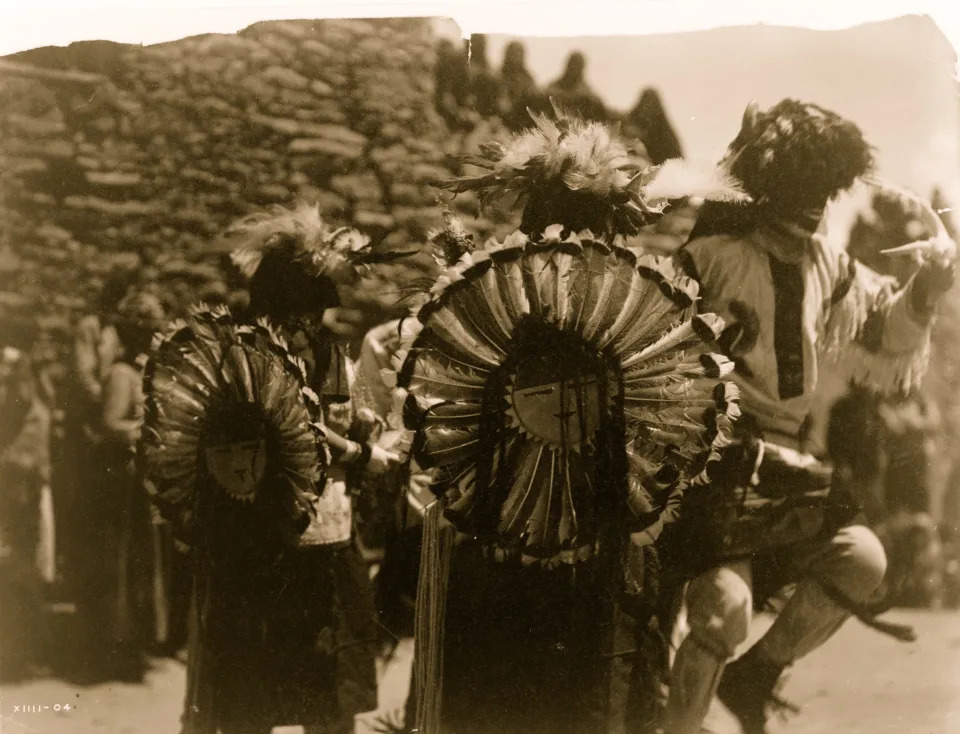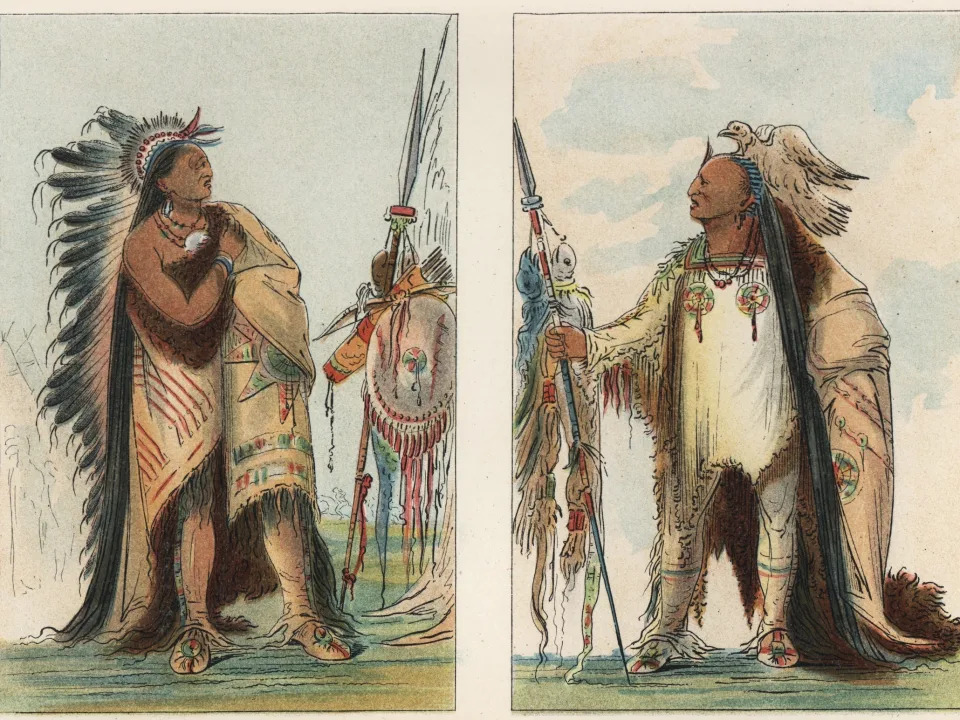Yoonji Han
Thu, November 23, 2023
Turkeys have played vital spiritual roles in ancient Native American societies.
Archaeological discoveries suggest turkeys were revered for their feathers.
The giant birds didn't become a popular food source until the Spanish conquest of Mexico in 1519.
According to legend, the Cherokee people began eating corn because of the turkey.
The myth goes that first man and woman on Earth grew corn as plants. When the woman spotted a turkey eating the golden kernels, she realized they were edible, marking the inception of corn as a vital food source for Indigenous communities.
Long before they were a Thanksgiving staple, turkeys have played significant roles in Native American culture. In Aztec mythology, Chalchiuhtotolin, "the jade turkey," was the god of disease and plague, while in Hopi lore, a turkey deity called the koyona katsina danced with other birds in nightly ceremonies or during the Mixed Dances of spring.
It wasn't until Spanish conquistadors exported turkeys to Europe after the 1519 conquest of Mexico that the birds became a popular food. Some of those turkeys may have famously wound up on the menu at the first Thanksgiving meal in the 17th century.

Costumed dancers wear dance bustles of Tewa sun god made of turkey feathers.
Buyenlarge/Getty Images
Reverence for turkeys
Archaeological evidence suggests Native Americans revered turkeys, treating them as important individuals to the household.
In 2012, archaeologists discovered a mass grave of more than 50 turkeys near a 1,000-year-old Native American village near Dove Creek, Colorado. The bodies had been carefully arranged within a circle of stones, indicating a ceremonial burial.
Researchers found many other arrangements of whole turkeys, along with other animals, in sites in Utah, Arizona, and New Mexico — some sites dating back to 750 to the 1500s. The presence of young turkeys in these burials suggest they were linked to fertility rites and crop planting in the spring.
Turkeys' feathers have also long played a vital spiritual role in Native American culture, according to Mary Weahkee, an archaeologist and a member of the Santa Clara Pueblo and the Comanche Nation. The white or thunderhead-black feathers, which represent clouds and rain, were especially prized, Weahkee said.
The Wampanoag tribe in the east used the bird's feathers for cloaks, and the Tuscarora and Catawba in the south used plumage for headdresses.

Two Crow nation warriors wear decorated skins and feathered headdresses.Florilegius/Universal Images Group via Getty Images
An ancient blanket painstakingly made with 11,500 turkey feathers dating roughly back to the early 1200s CE also pointed to the cultural significance of turkeys, according to researchers.
"This reverence for turkeys and their feathers is still evident today in Pueblo dances and rituals. They are right up there with eagle feathers as being symbolically and culturally important," Bill Lipe, professor of anthropology at Washington State University, said.
Turkeys weren't originally used as a food source
Turkeys were one of the few domesticated animals in North America until Europeans arrived in the 1500s and 1600s, according to the researchers behind the turkey blanket.
Ancient Native Americans fed turkeys corn, which was a precious crop at the time, according to archaeologist R. Kyle Bocinsky. Just three adult turkeys would have eaten as much corn as one human in a year, Bocinsky said.

A young leader of the Awá tribe, an Indigenous tribe in Brazil, wears a turkey-feather headdress and other adornments.Scott Wallace/Getty Images
Archaeological evidence also suggests that turkeys were not used as a food source until around 1050, when other primary food sources for Indigenous societies like deer began to dwindle. Few turkey bones showed signs of butchering, and turkey remains seldom appeared in trash piles.
Although turkeys became a widespread food source shortly after, the bird never lost its spiritual significance. To this day, the turkey and its feathers carry symbolic value, following a centuries-long tradition among Native American communities.
Read the original article on Insider
No comments:
Post a Comment